I believe the arts have three main purposes in our lives, first, to assist us to learn about the outer world, second, to discover the world within ourselves, and finally, the arts help improve the quality of our lives.
In his book The Arts and the Creation of Mind, Eisner (2002) argues that the arts perform one cognitive function which is “to help us learn to notice the world” (p.10). Children come into this world with a curious mind and have an intrinsic motivation to learn about their surroundings. The arts, drawing or painting for example, provide them with materials and experiences to enhance their ability to create meaning and make sense of what they see, touch, hear, smell and taste. In other words, the arts can reflect the awareness of a child about someone or something and help promote his or her intellectual growth. This being the case, Eisner (2002) supports:
Work in the arts is not only a way of creating performances and products; it is a way of creating our lives by expanding our consciousness, shaping our dispositions, satisfying our quest for meaning, establishing contact with others, and sharing a culture.
I am likely to agree with Eisner’s argument that “art provides the conditions for awakening to the world around us” (Eisner, 2002), and I believe those possibilities can happen through an array of experiences in which one is engaged with not only the process of making or performing arts but also viewing the arts. When we go to a museum, for example, viewing an artwork made in another time or in a different culture can develop our historical and cultural understanding. Just as it is, when we play a part of or just come to see a play which is set in a slavery time in the U.S., we will be able to learn about the history, the social life, the architecture, the clothes, the foods, and the like.
The arts are simultaneously vehicles for learning about the world and for “exploring our own interior landscape” (Eisner, 2002). Children have an innate interest in making art and tell stories about their experiences in everyday life. By conveying their concepts and emotions through the arts, children can develop a sense of knowing which experiences are meaningful and important to them, recognizing what they like and dislike, and understanding the relationship between self and others. In this sense, the arts help children, and adults as well to increase their self-awareness and self-identity. In addition to that, the arts also provide opportunities for us to express our feelings and figure things out to give them a form or forms of representation, such as visual, auditory, and kinesthetic. By that, we can enhance our ability to identify and understand what we feel about someone or something.
Arts provide one of “a way of knowing” (Eisner, 2002) of the true holistic self – body, mind and spirit. Having connection with and awareness of self is the major condition to improve the quality of life both physically and mentally. Kinesthetics art forms such as dancing, movement, acting, or giving talks are effective in teaching body awareness and enhancing our ability to use it. Every movement, sensation, and feeling running through the entire body strengthens one’s connection with our body and the flow of breathing. To be able to step fully in one’s body and acknowledge the status of every part, the experience itself is meaningful.
Then, there is the interconnection between drawing and mindfulness. Drawing as a mindfulness practice helps us learn to see things as they truly are. It invites us to observe and feel ourselves and the surrounding world – not through a curtain made by all the previous knowledge, experience nor skills – but the one in front of our eyes at that moment. It can be as close as our hand, the face of our beloved people, the feet we have been walking on everyday. Have you ever looked at your hands very closely, the curves of the fingers, the line of every wrinkle and palm of your hand? This very simple exercise of mindful drawing can give power to awake our inner connection with our sense of self, and with our intrinsic view of the world. For me, I was connected with my hand which made me compassionately love it more and love myself more.
It is easy to become stuck in our age-old knowledge and belief of the world, like the story of a frog sitting in the pond that can only see “flies” or “not flies”. Unconsciously or not, in the journey for adulthood, we are shaped and influenced to perceive the world through the lens of prejudice, judgment, and assumption. Through the way of seeing things as they are, Arts, in its purest practice, provide us the space to perceive ourselves and the world around us with an open and empty mind, to live in the moment, to deepen connection with people and things around, and to live a happy life. It teaches us the fundamentals of living – to see and appreciate the beauty in everyday life – which are the key to happiness.
I believe in both the educational and therapeutic functions of the arts which I keep as a reminder for my teaching practice, to balance the academic performance with the emotional and mental well-being for my students and for myself as well. After all, I believe in the power of the arts which is to help us complete ourselves as human beings.
References/ Nguồn tham khảo
Eisner, E. W. (2002). The arts and the creation of mind. New Haven: Yale University Press.
Eisner, E. W. (1982). Cognition and curriculum: A basis for deciding what to teach. New York: Longman Inc.
Harvard Medical School (2021, August 14). Giving thanks can make you happier. Harvard Health Publishing. https://www.health.harvard.edu/healthbeat/giving-thanks-can-make-you-happier
hooks, bell. (1994). Teaching to transgress : education as the practice of freedom. Routledge.
Ives, W., & Pond, J. (1980). The Arts and Cognitive Development. The High School Journal, 63(8), 335–340. http://www.jstor.org/stable/40365007
Nachmanovitch, Stephen. (2019). The art of is: improvising as a way of life. New World Library.
Phillips, R. Art Enhances Brain Function and Well-Being. The Healing Power of Art and Artists. https://www.healing-power-of-art.org/art-and-the-brain/

